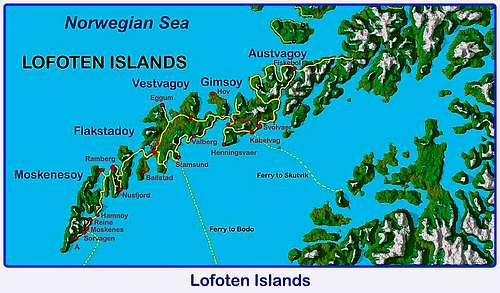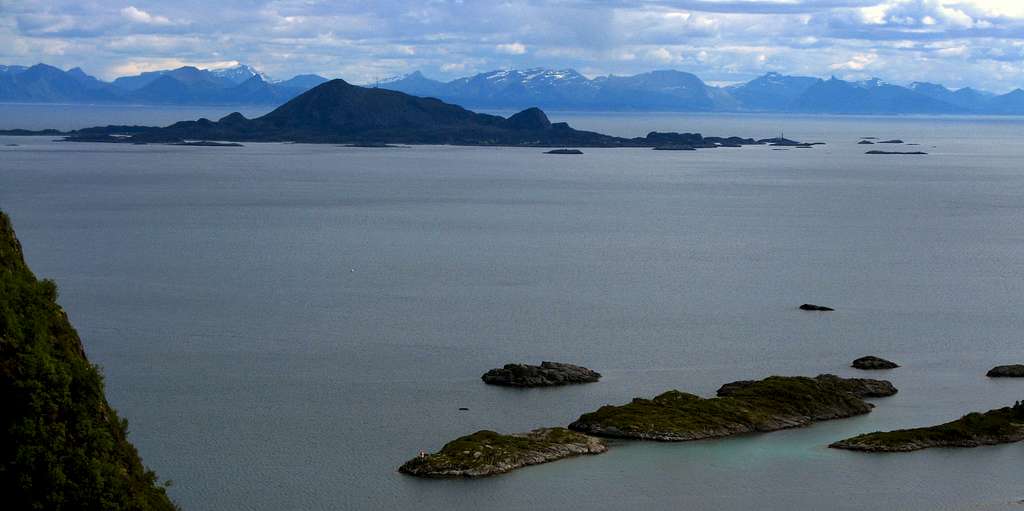-
 9389 Hits
9389 Hits
-
 86.85% Score
86.85% Score
-
 23 Votes
23 Votes
|
|
Route |
|---|---|
|
|
68.24620°N / 14.58060°E |
|
|
Trad Climbing |
|
|
Summer |
|
|
Most of a day |
|
|
TD inf., UIAA VI- |
|
|
5.10a (YDS) |
|
|
5 |
|
|
Overview
Forsida (The Outside route)
Forsida is one of the most classic routes of Lofoten, a pleasant stunning climb on excellent rock and above all a good way to acquire confidence with the climb on the Lofoten granite. Notwithstanding it’s not a very long route, Forsida is the longest way to reach the Svolvær Geita bicuspidate summit and probably the best one. The “goat of Svolvær” – this is the mean of its name - overlooks the town of Svolvær throwing into the sky two gigantic horns, the Storhorn (The Big Horn) on the left-hand side and the Lillehorn (The Little Horn) on the right-hand side.
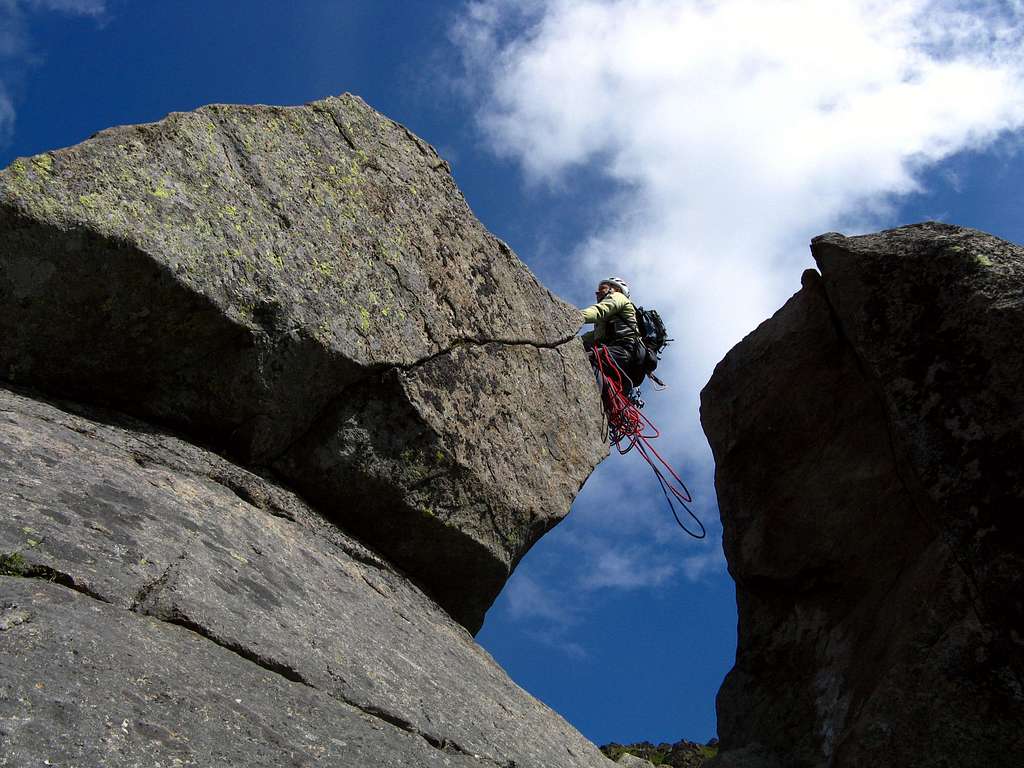
As the majority of the routes on Svolvær Geita, Forsida allows to summit the Big Horn. Climbers are used to do a long jump from Big Horn to Little Horn; after the 2008 rock-fall from Lillehorn inner edge - increasing the distance between the two horns - now the traditional jump from the big horn to the little one is still possible, but not much recommended because…the gap is wider and the landing space smaller!
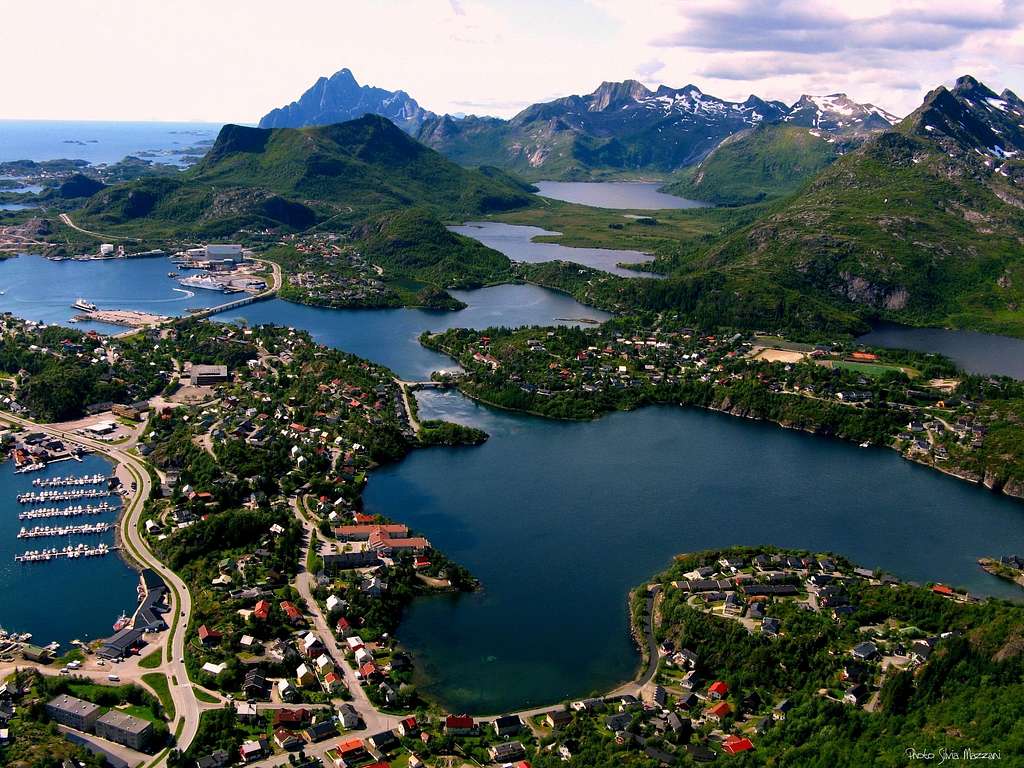
Getting There
Getting to Lofoten
There are various possibilities:
- By ferry boat from Skutvik to Svolvær
- By car from Evenes Airport to Svolvær
- By plane from Bodø
- By ferry boat from Bodø to Moskenes, Værøy or Røst (Southern Lofoten)
The closest town to Svolvær Geita is Svolvær.
Road approach to Svolvær Geita
From Svolvær roundabout turn to left (road-sign E10-Fiskebøl) and follow Kong’s Olav Veg (E10) for 1100 mt., then leave the E10 and turn to left (road-sign Melkerdalen – Nybyen). Turn to right reaching a Kinderngarten. Parking.




Walking to Svolvær Geita
Take the road towards the church graveyard and at once a path signed Sti Track is starting on your left-hand side. The path is marked with a red T (DNT – Den Norske Touristforening signals). After a slab equipped with an iron chain, follow the steep trail to a shoulder when The Goat appears. At a path-forking don’t follow the main path but leave it, turning to right, cross a stream and cut diagonally a steep grassy slope, reaching Forsida starting point. (40 minutes from the road).
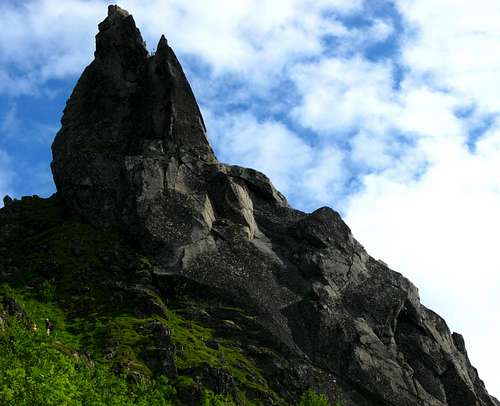
Forsida (The Outside Route) report
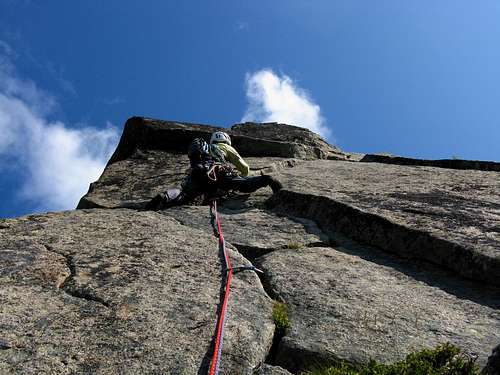
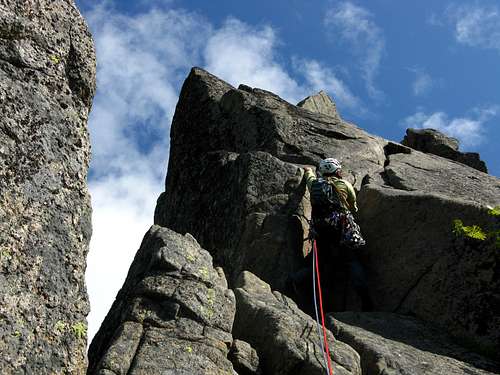
Forsida (The Outside Route) report - Norwegian Scale
Difficulty: TD inf., 5+ Norwegian
Equipment: not equipped
Climbing length: 130 m
Exposure: W
First ascent: W. Hoyer – A. Krane 1947
First ascent of Vestveggen-Avslutning (The West Wall Finish) B. Bommen – B. Lyche 1928
Starting point: Svolvær Kinderngarten (parking)
Starting point from a little terrace below SW ridge in the Western side of the ridge (little tree).
L1 - Climb a short steep wall with good holds, then follow some little corners and cracks; slantways to left climb a rib or otherwise a groove on the right. Easier rocks lead to a belay a bit higher of an horizontal crack. 3+, 35 mt.
L2 - Slantways to left cross an edge and reach the base of a beautiful steep crack. Belay below the crack. 4, 15 mt.
L3 - Climb the crack with superb moves, then cross a ridge towards right, reaching a huge terrace named “the sofa” and a stance below a steep diagonal cracks’ system. 5, 30 mt.
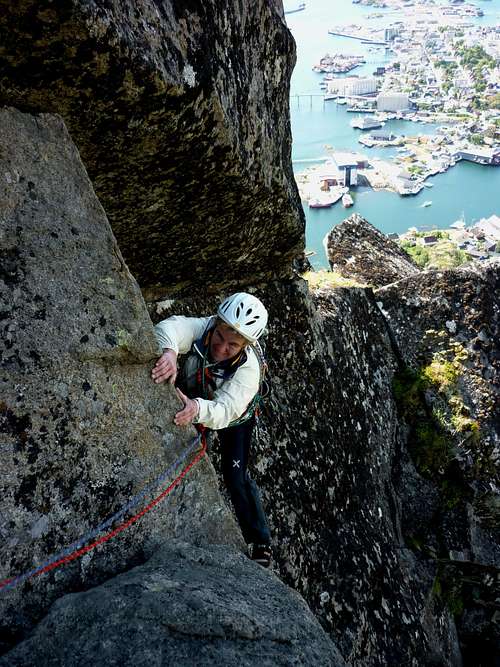
L4 – Straightly over the belay climb the cracks’ system; most difficult section is the first one, then am easier section leads to the ending thin cracks. Climb these and belay below a small shoulder. 5, 30 mt.
L5 – Reach the shoulder. From here a diagonal crack – it’s The West Wall Finish – leads to the summit of The Big Horn. Climb on the right a shallow corner with a crux start, then follow an easier dihedral-crack and finally a slab, leading to the top. 5+, Norwegian. 20 m. Exciting vertiginous belay. If you wish, cross the gap to the Little Horn, but now the jump is very long...
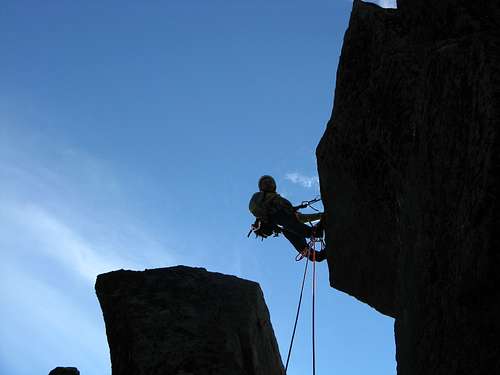
Descent: with two abseils along North side. A short abseil from the summit leads to a comfortable stance. A 28 mt. abseil reachs a little saddle. From here a grassy gully gets to the route’s starting point.
Essential Gear
Rope 2 x 50, helmet, various side friends and nuts, slings
History
Svolvær Geita first ascent was realized in 1910 by a Norwegian team (Bryn, Schieldrup and Rubenson). This ascent is a milestone in Norwegian climbing history. The same team realized – the following week – the first ascent of Stetind, after sailing along Tjsfjorden to reach the wild peak.
Red Tape
There are not particular restrictions in climbing.
Where to stay
In Svolvær and surroundings there is a wide choice of different kinds of accommodations: hotels, campgrounds and the traditional and typical rorbuers, the Norwegian fishermen's cabins, numerous and available in Svolvær, Henningsvær, Kabelvåg.
In Norway free camping is allowed in every place, if not expressly forbidden.
When to climb
Best months to climb are late May, June, July and August.
Climate
On Lofoten the weather can change suddenly from clear and blu sky with sunshine or the Northern Lights (Aurora Borealis) to violent storms with rain or snow. Maximum temperatures go from +30°C in June and July to -15°C in January and February; the average temperatures for these months are from +12°C to -3°C. The period with the minimum rainfall goes from April to June, while we may expect the maximum rainfall or snowfall between October and December.
Midnight sun: from 27 May to 17 July Polar night: from 6 December to 6 January
The Northern Lights can be seen over Lofoten from September to April.
Useful info about climate: Meteorologisk Institutt
Meteo
Guidebooks and maps



"Lofoten Rock" by Chris Craggs and Thorbjorn Enevoid
External links
